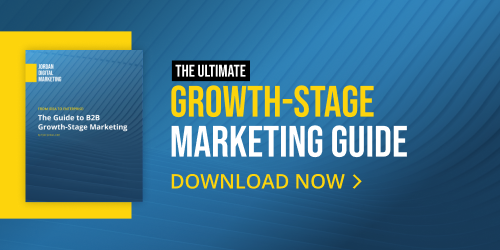Growing AI Search Visibility Phase 2: The Marketer Playbook for Authority Building
For all of TikTok’s high engagement levels, the platform has lagged behind more mature competitors Google and Facebook in targeting and measurement capabilities. TikTok took a step toward closing the gap with a recent announcement about enhanced mobile app ad measurement, meant to give advertisers more layers of data about levels of engagement with their app ads.
Let’s look at the new measurement capabilities: what they’re providing advertisers, how big a deal they are, and how advertisers should actually incorporate the data into their strategies.
The scoop on TikTok’s new measurement
With the release, which focuses on TikTok’s SAN (Self Attributing Network) and EVTA (enhanced view-through attribution), TikTok is staking a claim to credit outside of last-click conversions.
SAN integrates with MMPs (mobile measurement partners) to provide advertisers with customizable attribution windows and a greater range of metrics – including EVTA, which is a new attribution data point that registers video views of six seconds or more without a click.
According to TikTok, “EVTA measures the conversions that take place after a user views an ad for six seconds or more but doesn't click, then goes on to convert within the attribution window (maximum seven days).”
Is this a big deal for advertisers?
More data for advertisers is generally a good thing, and EVTA has the potential to provide more data for campaign optimization. What ultimately matters to marketers is conversions and down-funnel impact, and EVTA allows marketers to optimize campaigns for users likely to convert, regardless of their likelihood to click. This new data opens up the opportunity for marketers to fine-tune messaging and create more resonant content.
TikTok does have a tendency to hype up new tools, but I see this as beneficial. The ability to now see view-through conversions will help with campaign optimizations and allow for easy comparison with other platforms like Google and Facebook that already use similar metrics.
How should advertisers use the data?
While EVTA offers valuable data insights, the real challenge lies in interpreting the data into meaningful and actionable insights. Understanding that users engaged with content for over 6 seconds signifies that we’ve successfully captured their attention and held them captive. Armed with this knowledge, we can fine-tune other top-of-funnel ads by gaining insights into what prompts users to pause and watch instead of simply scroll past.
As for attribution when users actually do click, the SAN release gives us a few new options for the click-through window (1, 7, 14, or 28 days). Depending on which event you're trying to customize, it might make sense to keep attribution at the 7-day range, which is the default window. However, I believe that businesses tracking longer-duration events like registrations, payments, or orders should consider using 14-day and 28-day windows. These actions are typically at the bottom of the conversion funnel, and depending on your business, users may take some time to feel comfortable to complete these actions. Ultimately, you’ll want to test different windows to see which works best to capture the data that’s important to you.
Setting aside the TikTok hype, this is a promising update for marketers. More options for efficient engagement means alternatives to Google and Facebook’s high costs, so any advancements TikTok can make in measurement are welcomed. If you have any questions about how to put these to use in your campaigns, get in touch!
Tags:

Jan 2, 2024 5:05:55 PM



-Dec-04-2025-09-58-32-5416-PM.png?width=500&height=500&name=Regular%20Blog%20Hero%20(1)-Dec-04-2025-09-58-32-5416-PM.png)

